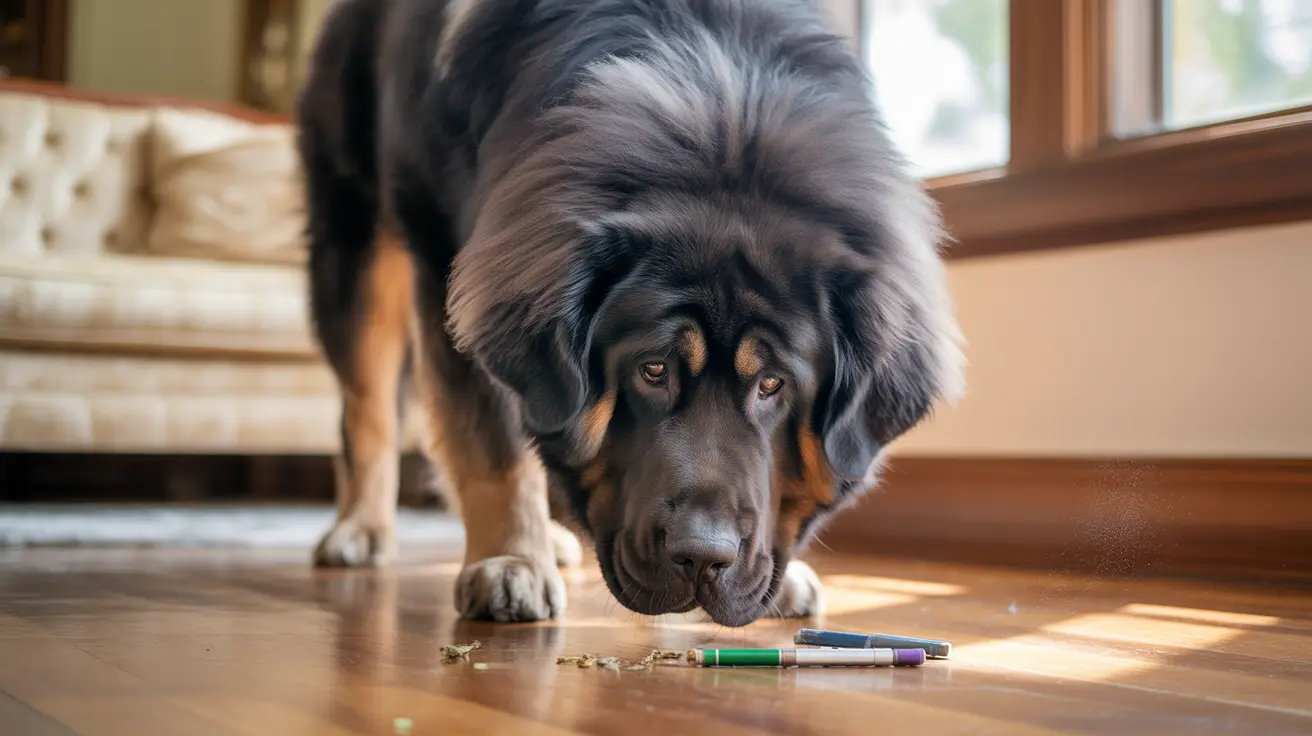Finding out your dog has eaten an ink pen can be a scary moment for any pet owner. While the situation requires immediate attention, understanding the risks and knowing how to respond can help ensure your pet's safety. This comprehensive guide will walk you through the essential steps to take and what you need to know about both ink toxicity and potential complications.
The good news is that modern pen ink is generally considered minimally toxic to dogs. However, the plastic components of the pen can pose a more serious threat, potentially causing gastrointestinal obstruction that requires immediate veterinary attention.
Immediate Steps to Take When Your Dog Eats a Pen
If you've just discovered your dog has eaten an ink pen, take these crucial first steps:
- Collect any remaining pen pieces to show your veterinarian
- Contact your vet or emergency animal hospital immediately
- Do not attempt to induce vomiting without professional guidance
- Monitor your dog closely for any concerning symptoms
- Document when the incident occurred and what was ingested
Understanding the Risks of Pen Ingestion
Ink Toxicity Concerns
Most modern ballpoint pen ink contains dyes mixed with water or oil and is considered minimally toxic. While your dog might end up with a temporarily stained mouth or tongue, serious poisoning from pen ink alone is extremely rare. However, large quantities of ink could potentially cause mild gastrointestinal upset.
The Real Danger: Plastic Components
The plastic casing and other pen parts pose a much more significant risk than the ink itself. These components can:
- Cause choking or immediate airway obstruction
- Create sharp edges that may damage the digestive tract
- Lead to intestinal blockage requiring surgical intervention
- Result in severe complications if left untreated
Signs of Trouble to Watch For
Monitor your dog closely for these warning signs:
- Vomiting or repeated attempts to vomit
- Loss of appetite
- Lethargy or unusual behavior
- Abdominal pain or bloating
- Difficulty defecating
- Changes in drinking or urinating habits
When to Seek Emergency Veterinary Care
Don't wait to contact your veterinarian if you observe:
- Severe vomiting or diarrhea
- Signs of abdominal pain
- Significant lethargy
- Difficulty breathing
- Loss of appetite lasting more than 24 hours
- Any unusual behavior that concerns you
Prevention and Future Safety
To prevent future incidents:
- Keep all writing implements stored securely
- Use dog-proof containers for office supplies
- Provide appropriate chew toys for dogs who like to mouth objects
- Consider pet-proofing areas where pens are commonly used
- Address any underlying anxiety or boredom that may lead to inappropriate chewing
Frequently Asked Questions
What should I do immediately if my dog ate an ink pen?
Contact your veterinarian right away and collect any remaining pieces of the pen. Don't induce vomiting unless specifically instructed by a professional. Monitor your dog closely for any signs of distress.
Is the ink in a ballpoint pen toxic or dangerous to dogs?
Modern ballpoint pen ink is generally considered minimally toxic to dogs. While it may cause mild gastrointestinal upset, serious poisoning is rare. The main concern is usually the plastic components rather than the ink itself.
What are the signs of a gastrointestinal obstruction caused by pen plastic in dogs?
Watch for vomiting, loss of appetite, abdominal pain, lethargy, constipation or diarrhea, and changes in behavior. If you notice any of these symptoms, seek veterinary care immediately.
Can pen ink poisoning cause serious health problems in my dog?
While serious ink poisoning from standard pens is rare, large quantities could potentially cause mild gastrointestinal upset. The plastic components pose a more significant health risk than the ink itself.
When should I take my dog to the vet after it swallows pen parts or ink?
Seek immediate veterinary care if you know your dog has swallowed pen parts, or if you observe any concerning symptoms such as vomiting, lethargy, loss of appetite, or signs of abdominal pain. It's better to err on the side of caution with any non-food item ingestion.
Remember, while pen ink itself may not be highly toxic, the situation still warrants careful monitoring and professional guidance. When in doubt, always consult with your veterinarian to ensure your pet's safety and well-being.






